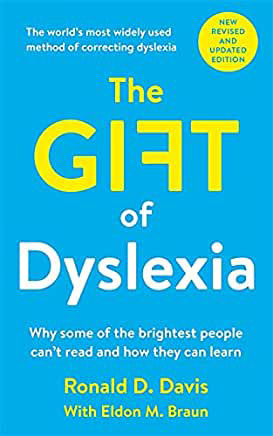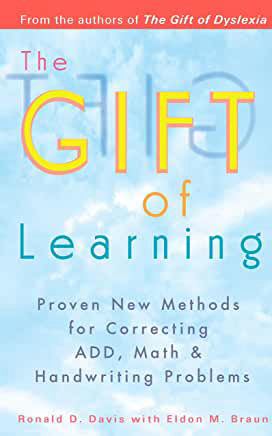
ISBN: 978-0285638730

ISBN: 978-0399528095
The Davis method was developed by Ronald D. Davis and his team to help people with dyslexia and other learning difficulties such as dyscalculia, illegible handwriting, AD(H)S, concentration problems and combinations of these difficulties. The Davis method is offered in more than 40 countries around the world.
Ronald D. Davis discovered that dyslexia is not an inborn disorder, but the result of a special innate gift - thinking in three-dimensional pictures. However, this gift can cause people to develop dyslexia, dyscalculia, and AD(H)D when learning how to read, write and do arithmetic.
We are born as picture thinkers. By the time we are nine years old, most of us also think in words. We do this, for example, when we talk to ourselves. But there are people who do not do that.

ISBN: 978-0285638730

ISBN: 978-0399528095
With this innate gift, picture thinkers can see things in their minds from different angles. In the three-dimensional world we live in, this is a great advantage. A thing that you do not understand at first can be viewed in your mind from different positions without having to move.
This happens so fast - at 32 frames per second - that these people are not aware of it.
There is always an introductory meeting with the child/student and the parent(s) or with the adult and, if desired, also with a partner.
Before the training can begin, there is a detailed intake interview of 1.5 to 2 hours about the individual situation and the goals of the training.
During the training, everything is aimed at eliminating the difficulties caused by picture thinking. The client learns to
• to recognize his/her confusion and to dissolve it
• to release, a Davis relaxation technique
• to work with the appropriate energy.
At the same time the client learns to use the picture thinking - the strong side - to his advantage and to use it purposefully. It is a different way of learning and processing information that suits the picture thinker.
During the training we use plasticine clay. This strengthens creative thinking and at the same time builds up three-dimensional images that the picture thinker needs for everything. During the training, the client learns all the techniques necessary to continue working at home. This will be done with the support of a parent.
Davis training for dyslexia takes 30 hours. This is an intensive week with six hours training each day. For dyscalculia and other more complex difficulties, it takes longer, depending on the individual’s need.
At the end of the training there is a final meeting between the client, a parent and myself. The parent(s) help with the things that still need to be completed at home in the coming period. The client receives a detailed report with photographs of everything we did and all the materials they need to continue working at home. We also plan a follow-up meeting.
Easy Website Builder